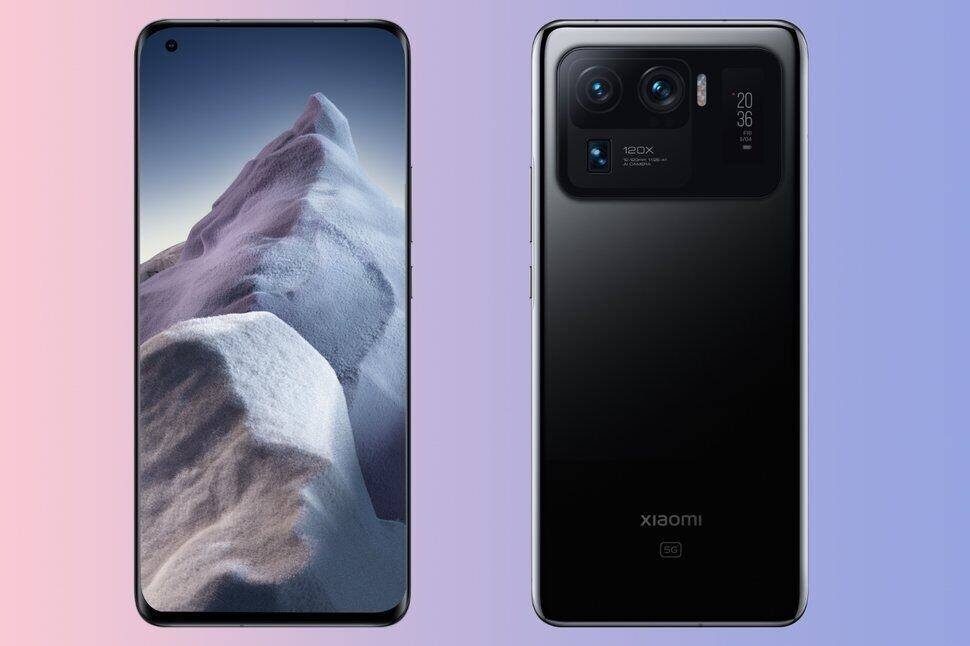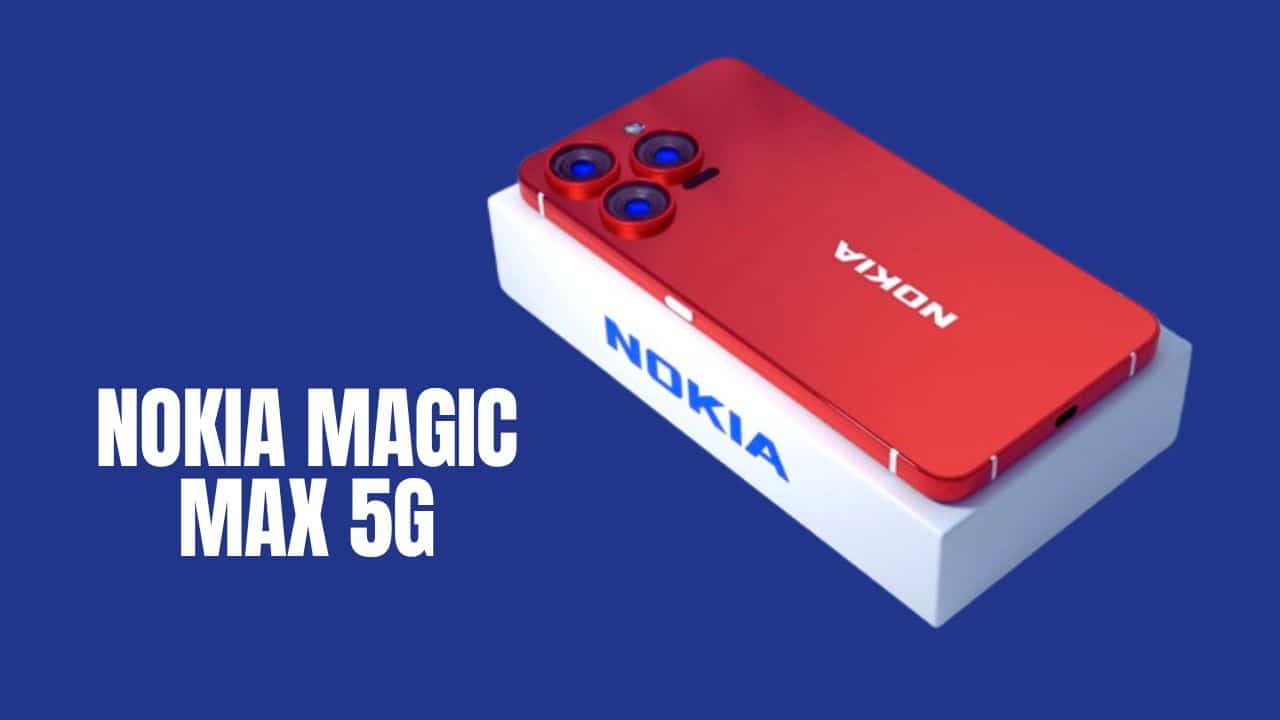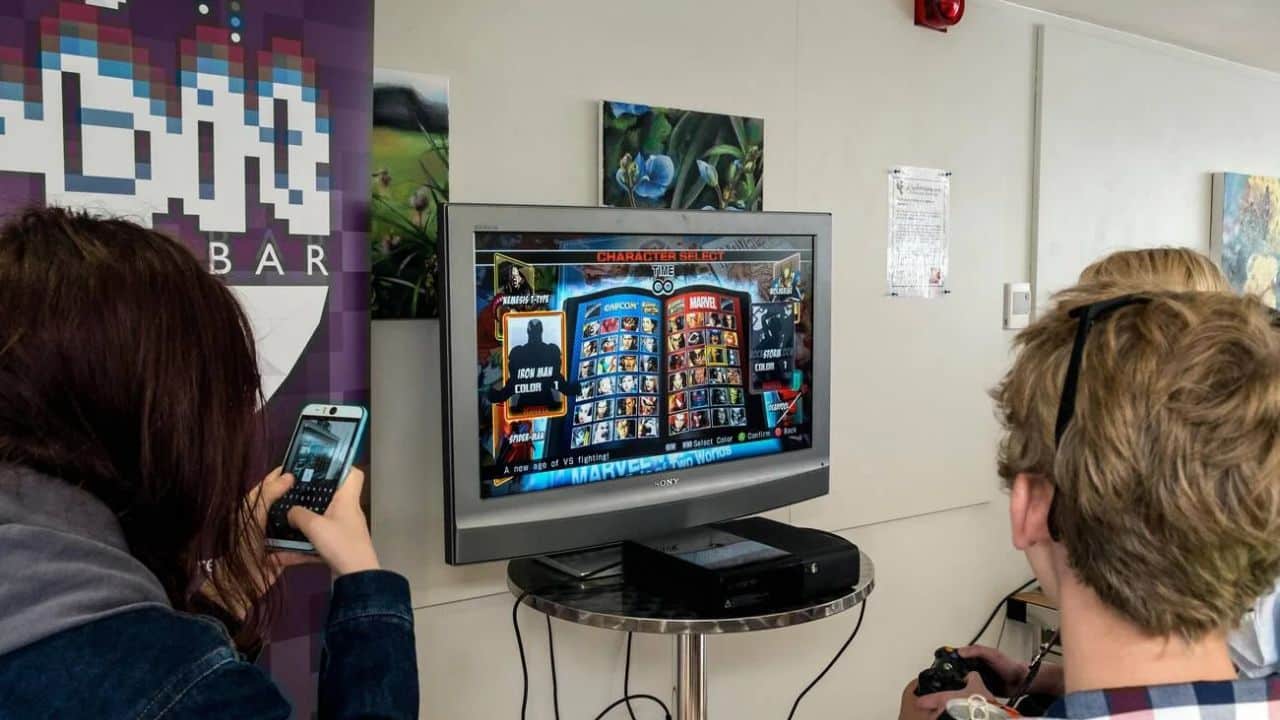Xiaomi Mi 11 Ultra is the company’s next big move toward establishing itself as a household name in the premium smartphone market. Xiaomi is one of the most popular smartphone brands in the world, with a slew of new models released each year. The Mi 11 series, in particular, has included low-cost phones like the Mi 11 Lite alongside flagships like the Mi 11X Pro. However, the Xiaomi Mi 11 Ultra, which was announced on March 29, 2021, in India, has caused a lot of excitement, and people are still trying to figure out where it belongs. Some call it Xiaomi’s best phone, while others call it its worst. However, it’s clear that the phone has a distinct appearance and some divisive characteristics.
Xiaomi Mi 11 Ultra review in Breif
The Xiaomi Mi 11 Ultra exists for one simple reason: to give India’s top Android phones a run for their money with a device that appears to break many records and set new standards. It’s a device worth considering for consumers who don’t care about brands, especially if they’re looking for something unusual.
The Xiaomi Mi 11 Ultra is the next big step in Xiaomi’s overall plan to establish itself as a household name in the premium smartphone sector, which began with the Mi 10 last year. It goes much further in that approach, directly competing with the Samsung Galaxy S21 Ultra and Apple iPhone 12 Pro Max.
A peek at its specifications reveals that it is not just ultra in name, but also in practice: a curved 120Hz QHD+ Dolby Vision display, twin Harman Kardon stereo speakers, 67W wired and wireless charging, top-of-the-line specifications, and, best of all, class-leading cameras for every need.
While the Xiaomi Mi 11 Ultra is shamelessly extravagant, it comes at the expense of poor ergonomics due to the phone’s weight, thickness, and slickness. Of course, the plethora of hardware bells and whistles have to be accommodated in some way, but we’d prefer a more subtle design implementation. Even if you’re a careless user, you shouldn’t be concerned about the damage it because the ceramic body and Gorilla Glass Victus combination is built to last.
It boasts the latest Snapdragon 888 processor at its heart, which gives it the performance prowess to chew through everything. While most phones with this chipset have had mediocre battery life, the Xiaomi Mi 11 Ultra outperforms them all, comfortably lasting a day with moderate to heavy usage. A full charge from the provided 55W charger takes around an hour, which is standard. Although the phone is capable of 67W fast charging, you will not be able to find a compatible charger in India.
The design, construction, display, speakers, and battery life are all excellent, but the cameras steal the show. You can tell these cameras are serious about business just by looking at the back. Xiaomi claims that the Mi 11 Ultra boasts three flagship-level cameras, and it is around 67 percent correct. The primary camera boasts a nearly 1-inch sensor, which allows for amazing bokeh, low-light performance, and a unique aesthetic. Similarly, the ultra-wide lens can capture images that are broader than any other phone while maintaining the majority of the clarity and details. Unfortunately, the telephoto lens pales in comparison.
Xiaomi’s first ultra-premium smartphone, with all of its features, is not only worthy of the moniker, but also of its price, and so earns our recommendation. The only phone that comes close is the Samsung Galaxy S21 Ultra, but its Exynos processor limits its performance and efficiency, giving the Xiaomi Mi 11 Ultra the upper hand where it counts – and for a lot less money.
Xiaomi moved from an inexpensive smartphone company to a legitimate premium contender in less than a year. It democratizes features like no other, and we’re excited about its prospects in this market. Please make a foldable that isn’t too expensive.
Xiaomi Mi 11 Ultra Review
Design
The Mi 11 Ultra, unlike many other phones, features a ceramic body. The outside structure, meanwhile, is built of metal. The Mi Mix 2S was the last Xiaomi phone to feature a ceramic body. The Mi 11 Ultra, on the other hand, is more comfortable and feels better than the Mi Mix 2S.
The phone measures 164.3 x 74.6 x 8.4 mm and weighs roughly 234 grams, making it a little difficult to handle. The front is protected by Gorilla Glass Victus.
The power button, along with the volume rocker, is positioned on the right side of the phone and is easy to access. On the bottom border is a USB-C port.
The general public, on the other hand, will be missing two features: a 3.5mm audio connection and a microSD card slot.
A massive camera hump on the device’s back houses some massive lenses. A display with certain smartwatch functions is also housed in the hump.
Display
The screen on the Xiaomi Mi 11 Ultra is identical to that on the Mi 11. It has a 6.81-inch AMOLED display with curved edges. It has a resolution of 1440 x 3200 pixels. The show is one of the best of its kind, and it has never been seen anywhere else in the world.
Nothing on the market compares to it, with a 120Hz refresh rate, HDR 10+ support, and up to 1700 nits of maximum brightness.
The back display of the Mi 11 Ultra is identical to that on the Mi Band 5 fitness tracker. When the phone is facing screen down, it’s as if an always-on display comes in useful, with options to show a clock, photo, or personalized texts, as well as notifications. It can be activated using the camera app on the phone, allowing users to frame selfies taken with the primary camera.
This display is primarily a curiosity, but the additional always-on display is delightful – and unquestionably more power-efficient than using the larger primary panel for the same purpose.

Front camera
There are three rear cameras on the Xiaomi Mi 11 Ultra: a 50MP f/2.0 primary lens, a 48MP f/2.2 ultra-wide lens, and a 48MP f/4.1 periscope lens. 5x optical zoom and 120x digital zoom are available on the latter.
Photographs taken with the primary camera are beautiful – they’re bright and colorful, with natural depth effects and fine details. Xiaomi’s decision to prioritize sensor sizes over megapixels paid off handsomely.
Bright-light shots are vibrant and colorful, with no artifacts, noise, or signs of artificial sharpening. In low light, though, there is more noise, but there is still a lot of detail and some of the most accurate colors I’ve ever seen on a phone.
Night mode usually improves things even more by adding detail and better exposing specific light sources but be wary of too much ambient light overpowering the image.
Thanks to the powerful ultrawide and telephoto lenses, long and near shorts can represent a large number of details. Video recording at up to 8K resolution at 24fps and 4K at up to 60fps is possible.
Back camera
The selfie camera has a powerful 20MP (f/2.2) lens that can take bright and vivid photographs. The portrait mode properly balances the number of shadows and highlights, albeit the default blurring of the backdrop is a little too much.
Users may, however, use the rear display to activate the rear cameras and capture selfies. Despite the fact that the technique is a little difficult, the captured selfies will outperform any other selfies taken with any other phone. The depth effect is more realistic with rear cameras, and the colors are more bright.
The front camera’s video recording capacity is likewise impressive, at 1080p at 6fps.
Performance, Software, and User Interface (UI)
The Snapdragon 888 engine is coupled with 12GB of RAM and a powerful GPU Adreno 660 in the Xiaomi Mi 11 Ultra, as it is in other high-end Android phones in 2021. Because of these inherent features, the phone is capable of handling a wide range of tasks.
For what it’s worth, the phone has no problems running games like COD and PUBG Mobile. As a result, if users don’t play for long periods of time, the heat management and performance issues won’t be a deal-breaker. In addition, the phone’s screen runs MIUI, which is based on Android 11.
Audio sounds great on the Xiaomi Mi 11 Ultra’s two stereo speakers, whether you’re listening to Spotify, watching a movie without headphones, or on a video or voice call.
Charging and Battery
While the phone comes with a 5,000mAh battery, which appears to be large, it clearly struggles to keep up with the giant 120Hz display, powerful CPUs, and rear screen, and the phone frequently fails to last a single day with the battery support.
Once completely charged, the phone would be fully exhausted within 12 to 15 hours of average use. When the phone gets hot, the power usage increases dramatically. The powerful 67W speedy, on the other hand, comes to the relief of heavy users. The battery may be fully charged in less than 30 minutes.
Xiaomi Mi 11 Ultra pricing and availability in India
The Xiaomi Mi 11 Ultra was released on April 23 and costs Rs 69,999 in India. Black and white are two color possibilities. The online sale partner is Amazon, with the initial sale set for July 15. SBI credit card transactions will receive a Rs 5,000 immediate discount.
Xiaomi Mi 11 Ultra Price in Bangladesh
Officially, the Xiaomi Mi 11 Ultra pro is not available in Bangladesh. In India, the 12GB 256GB model has been introduced. When converted to Bangladeshi Taka, the price is roughly 80,158 Taka. Here, the conversion rate is 1.15. This device’s unofficial pricing is subject to change based on the seller’s rate and tax concerns.
Xiaomi Mi 11 Ultra Review in Details:
Xiaomi smartphone with a hole-punch display in the case
Glass and ceramic make up the Mi 11 Ultra. It is available in two color schemes: white and black. OnePlus, on the other hand, offers colorful versions of its flagship, the 9 Pro. The Mi 11 Ultra is water and dust resistant to IP68 standards.
The Mi 11 Ultra feels very premium in the hand, thanks to its 239 g weight (0.53 lbs). The Xiaomi smartphone is large and heavy, making it difficult to handle. The transitions between the front glass and the ceramic back, which meet the metal frame, are extremely smooth. The smartphone has a solid feel to it.
Gorilla Glass Victus protects the 6.81-inch screen. The curved OLED panel’s four corners are all rounded. The display’s bezels are extremely thin. The Xiaomi Mi 11 Ultra has a screen-to-body ratio of 91.4 percent. The screen-to-body ratio of the Xiaomi Mi 11 is the same.
The huge camera bump with a secondary display is the Mi 11 Ultra’s most conspicuous design feature. Individual preferences will determine whether users like it or not. The Xiaomi smartphone does not have a hefty feel about it. Furthermore, when placed on a flat surface, it does not wobble.
Mi 11 Ultra’s connectivity and features include an infrared blaster
The Mi 11 Ultra’s most intriguing feature is a secondary display that is built within the camera module. The native resolution of the 1.1-inch OLED panel is 294×126 pixels. It can show notifications or be used as a viewfinder for the main camera. Xiaomi’s smartphones now have Always-on-Display capabilities thanks to MiUI 12.5.
The Mi 11 Ultra has a 5G dual SIM capability. Users can attach external devices to their smartphones using USB On-The-Go capabilities. Miracast, which allows for the smooth projection of multimedia content over Wi-Fi, functions flawlessly. The Mi 11 Ultra comes with a USB-C connection, although it only supports USB 2.0 speeds. The smartphone also has an IR blaster, which allows it to operate home entertainment systems.
The UFS 3.1 memory on the Android smartphone is 256 GB. The user has access to only 225 GB. There is no way to expand the amount of storage space available.
Xiaomi smartphone with MiUI 12.5 software
Android 11 is installed on the Mi 11 Ultra (security patch level at the time of our review: April 2021). MiUI is a custom launcher that comes with the Xiaomi smartphone (current version at the time of our review: 12.5).
Xiaomi’s custom launcher has a beautiful design and plenty of customization possibilities. Xiaomi’s Android skin is very similar to Apple’s iOS in terms of style.
The Google Play Store is preinstalled on the EU version of the Xiaomi Mi 11 Ultra, which supports Google Play Services. The Chinese version, on the other hand, does not include Google Play Services out of the box. Furthermore, it is missing the German language pack. Instead, it uses Chinese alternatives like Xiaomi’s own services. In any event, after purchasing the gadget, consumers can easily install Google Play Services. However, due to the lack of certifications, some applications will not function.
Thankfully, there are no system adverts on Xiaomi’s flagship smartphone, at least not on the Chinese edition. There was no system advertising on the Mi 11. The Camera2 L3 API is supported by the Mi 11 Ultra. Users will be able to stream video in HD quality because Widevine L1 is also supported.
Xiaomi Mi 11 Ultra with 5G communication and GNSS
Dual SIM capabilities, a Bluetooth (5.2) module, and an NFC chip for contactless payments are all included in the Xiaomi smartphone. Wi-Fi 6E and MIMO (VHT160) are both supported by the Mi 11 Ultra. The Mi 11 Ultra is capable of extremely fast upload speeds. Our reference-grade router, the Netgear Nighthawk AX12, had much slower download speeds.
A 5G modem is included with the Mi 11 Ultra (Qualcomm X60). Potential purchasers should be advised that the Chinese version of the Mi 11 Ultra lacks Play Protect certification, which means it will not work with Google Pay.
The Xiaomi smartphone supports 17 LTE frequency bands in addition to a wide range of 5G bands (all frequency bands relevant for Germany are supported by the Chinese version of the Mi 11 Ultra).
We take our evaluation device on a bike ride to see how precise it is when it comes to navigation. We’ll be joined on this ride by a professional navigator, the Garmin Edge 500. At the end of our 10-kilometer bike, the difference between the high-end Chinese smartphone and the Garmin Edge 500 is only 60 meters (197 feet). The Mi 11 Ultra stayed fairly close to the expert navigator’s route and had no issue accurately mapping our journey. This is why it’s a good choice for navigation.
GPS (L1+L5), GLONASS, BeiDou (B1I+B1C+B2a), and Galileo (E1+E5a) are the worldwide navigation satellite systems that our review gadget uses for geolocation. The user’s location is promptly learned both outdoors and indoors. When it comes to determining the user’s geographical location, the Android smartphone has a 3 m (10 ft) margin of error.
Xiaomi smartphone with VoLTE telephony and call quality
The call quality on the Xiaomi Mi 11 Ultra is excellent. The microphone quality is quite good, according to our call partner (MicGurus), and voices are reproduced very well.
The Xiaomi smartphone does not have an eSIM slot (at least in Europe). There are only two actual SIM cards that can be used at a time. Both Wi-Fi Calling and VoLTE are, nevertheless, supported.
Cameras – Only the Mi 11 Ultra has a triple-camera setup.
In our camera test, the Mi 10 Ultra performed admirably. Xiaomi has boosted its photography game once again with the Mi 11 Ultra. Only a triple-camera setup is available on the Mi 11 Ultra. However, the main sensor, which was developed by Samsung, is extremely large (1.12 inches) for a smartphone. The “super” pixel size is 2.8 m, and the pixel size is 1.4 m. (which is achieved through quad pixel binning).
Photographs shot with the ISOCELL GN2 sensor from Samsung appear to be extremely detailed and color-accurate. The dynamic range, on the other hand, is not always optimal. Despite Samsung’s Dual Pixel Pro technology, the sharpness isn’t particularly good, particularly in the corners. In low-light situations, the 50-megapixel image sensor exposes its true potential. Even in low light, the sensor captures a lot of detail, and the shots are always properly illuminated.
The Mi 11 Ultra’s 48-MP Periscope lens provides 5X optical zoom and 120X digital zoom. Even when utilizing 10X zoom, the Xiaomi smartphone generates passable photographs thanks to optical image stabilization. Images captured at 5X zoom are also shockingly good.
The 12-mm super wide-angle camera features a 128-degree field of view and a 48-megapixel picture sensor. This camera delivers slightly fuzzy photos that are detailed and color-accurate. Photos taken with the super wide-angle lens, on the other hand, appear realistic due to the Xiaomi smartphone’s little sharpening, which is unlike most other competing smartphones. However, the extreme wide-angle images’ corners appear to be quite fuzzy.
The main, ultra-wide-angle, and Percipoe cameras are all capable of recording 8K video at 24 frames per second. Switch to 4K (up to 60 FPS) or 1080p if you prefer a faster frame rate (up to 1920 FPS). The smartphone also has a night video option that allows users to record 1080p footage at 30 frames per second. It is not possible to switch between cameras while the video is being recorded.
The Mi 11 Ultra’s front-facing camera takes excellent selfies. Buyers may utilize the main camera to snap incredibly high-quality selfies—only in photo mode at this time—thanks to a secondary display on the back that can act as a viewfinder. In the future, the 20-megapixel selfie camera should be updated to allow users to record UHD video. In a future version, portrait mode will be unlocked as well.
Xiaomi Mi 11 Ultra’s display is a WQHD+ panel
The Samsung OLED panel on the Xiaomi Mi 11 Ultra measures 6.81 inches. The display supports adaptive refresh rate technology and has a native resolution of 3200×1440 pixels. Depending on the screen content, the refresh rate might range from 30 to 120 Hz. The Samsung Galaxy S21 Ultra has a distinct advantage in this category because it can lower the refresh rate to 10 Hz and so conserve more energy.
The Mi 11 Ultra’s 10-bit panel has a very high brightness of 891 cd/m2. The brightness is equally distributed over the screen. The Xiaomi smartphone scored 1252 cd/m2 in our APL50 test, which involves displaying a pattern with uniformly dispersed dark and bright regions. The Xiaomi Mi 11 Ultra is said to have a brightness of 1700 cd/m2. In our tests, we were unable to verify this claim. The Mi 11 Ultra, on the other hand, will most likely be able to attain a greater brightness in a 10% stimulation window (APL10). In any event, the Mi 11 Ultra’s brightness is sufficient for HDR video.
The Mi 11 Ultra uses pulse width modulation to manage brightness (PWM). The screen flickers at a reasonably high frequency of 455 to 510 Hz when the brightness is below 68 percent. The frequency varies between 138 and 490 Hz when the brightness is less than 15%. The frequency reaches 120 Hz at full brightness. However, the amplitude is relatively tiny in this case. Furthermore, a DC dimming mode is available.
Xiaomi smartphone with Snapdragon 888 processor
The Qualcomm Snapdragon 888 powers Xiaomi’s flagship smartphone. One Prime Core with a maximum frequency of 2.84 GHz, three Cortex-A78 high-performance cores with a maximum frequency of 2.42 GHz, and four Cortex-A55 cores with a maximum frequency of 1.8 GHz are included in the SoC. The GPU in this device is Qualcomm’s Adreno 660.
The Snapdragon 888 in the Mi 11 Ultra achieves great scores in our suite of benchmarks. Despite this, the Mi 11 Ultra falls short of the Asus ROG Phone 5. In the PCMark benchmark, the Xiaomi smartphone did not farewell. The Mi 11 Ultra performs far better than the Mi 11 under sustained stress, as it does not shut down due to overheating and completes our benchmarks. However, there are significant performance swings because the smartphone must throttle down from time to time to avoid reaching dangerously high temperatures.
Because thermal performance isn’t as critical in everyday use, the Mi 11 Ultra cuts a very tiny figure. The system’s performance is excellent, and the applications launch swiftly. The Xiaomi smartphone has a UFS 3.1 memory that is extremely fast. Internal memory, on the other hand, could have been speedier. Higher data transfer rates are possible with the Snapdragon 888.
Xiaomi Mi 11 Ultra with a 120-Hz screen for gaming
GameBench is used to keep track of frame rates. The Xiaomi smartphone includes a Game Turbo Mode that is designed to enhance gaming performance.
In PUBG Mobile, the Mi 11 Ultra can attain 40 frames per second using the Ultra HD preset. Despite the fact that Xiaomi’s flagship smartphone features a 120-Hz screen, the frame rate in PUBG appears to be limited to 60 FPS.
The Mi 11 Ultra is able to maintain 120 FPS in less demanding Armajet most of the time. We do, however, recommend the Asus ROG Phone 5 to anyone who wants to play games on their phone. The Mi 11 Ultra becomes extremely heated after 30 minutes of gaming.
Xiaomi smartphone with rapid charging battery life
Consumption of energy
With the 67-W charger, the 5000-mAh battery can be fully charged in 36 minutes, according to the Chinese manufacturer. Because the Chinese version of the Mi 11 Ultra that we have does not come with the 67-W charger, we were unable to verify this claim. The Xiaomi smartphone also enables wireless charging at a rate of 67 watts and reverse wireless charging at a rate of 10 watts.
The power demand is rather considerable when the computer is idle. However, when the system is loaded, the energy consumption is normal.
The Xiaomi Mi 11 Ultra gets a thumbs up
The Xiaomi Mi 11 Ultra is a flagship phone that can compete with Samsung’s Galaxy S21 Ultra and Oppo’s Find X3 Pro. The Chinese smartphone offers a luxury feel in the hand (because of its weight) and a long list of remarkable specifications. The camera system on the Mi 11 Ultra is quite excellent, however, it is restricted by software limitations. However, the rear OLED panel, which may be used as a viewfinder, isn’t a game-changer.
The Mi 11 Ultra lays a solid foundation for the Mi series’ future smartphones. All Xiaomi has to do now is concentrate on improving its goods.
There is one area in which Xiaomi might do a lot better. Almost all smartphones in this price range have USB 3.2 ports. Xiaomi cannot afford to cut corners in this area. The slow USB 2.0 ports will not be available on future Mi 12 smartphones. Furthermore, in terms of long-term software support, Samsung is ahead of Xiaomi.
The Mi 11 Ultra is not well-suited for gaming because it gets rather hot under an extended load. A dedicated gaming smartphone, such as the Asus ROG Phone 5, would be a far superior option for gamers.
The Final Word
The Xiaomi Mi 11 Ultra boasts some of the best hardware on the market, including top internal specs, a powerful camera, a brilliant display, a fast chipset and GPU, and quick charging via both wired and wireless methods.
However, there are several disadvantages, such as the exorbitant pricing and the clumsy MIUI software, as well as the lack of a promised upgrade. Furthermore, due to the ungainly camera module, the Mi 11 Ultra is not just huge but also unsightly.
Overall, if the price and large size of the phone don’t bother you, the Xiaomi Mi 11 Ultra is a fantastic phone.
Apart from this, you can also read entertainment and Tech articles here: Pulse Oximeter, Google Pixel 5a Review, NBA Stream XYZ, CCleaner Browser review, Avocado Calories, Bear Grylls net worth, Rihanna net worth 2021, Dry white wine, Highest Paid CEO, The 100 season 8, Sundar Pichai net worth, Legacies Season 2, Grimes net worth, Oscar Isaac height, Arnab Goswami Salary, Bhushan Kumar net worth, Prabhas wife name, Konosub season 3, Good Omens season 2, F95Zone, how to change MSI keyboard color, Microsoft Office Suite, how to block subreddits, How to Share Netflix Account, how to change Twitch name, The Last Airbender 2, Sherlock Season 5, Homeland cast, Now you see me, Love Alarm season 2, Young Justice season 4, Shield Hero season 2, Salvation season 3, the feed season 2, Taboo season 2, Jack Ryan season 3.
Xiaomi Mi 11 Ultra Specifications at a Glance:
| NETWORK | Technology | GSM / CDMA / HSPA / EVDO / LTE / 5G |
|---|---|---|
| 2G bands | GSM 850 / 900 / 1800 / 1900 – SIM 1 & SIM 2 | |
| CDMA 800 | ||
| 3G bands | HSDPA 850 / 900 / 1700(AWS) / 1900 / 2100 | |
| CDMA2000 1xEV-DO | ||
| 4G bands | 1, 2, 3, 4, 5, 7, 8, 12, 17, 20, 28, 32, 38, 40, 41, 42, 66 – International | |
| 1, 2, 3, 4, 5, 7, 8, 12, 17, 18, 19, 20, 26, 28, 34, 38, 39, 40, 41, 42 – China | ||
| 5G bands | 1, 3, 5, 7, 8, 20, 28, 38, 40, 41, 77, 78, 79 SA/NSA – International | |
| 1, 3, 28, 41, 77, 78, 79 SA/NSA – China | ||
| Speed | HSPA 42.2/5.76 Mbps, LTE-A, 5G |
| LAUNCH | Announced | 2021, March 29 |
|---|---|---|
| Status | Available. Released 2021, April 02 |
| BODY | Dimensions | 164.3 x 74.6 x 8.4 mm (6.47 x 2.94 x 0.33 in) |
|---|---|---|
| Weight | 234 g (8.25 oz) | |
| Build | Glass front (Gorilla Glass Victus), ceramic back, aluminum frame | |
| SIM | Dual SIM (Nano-SIM, dual stand-by) | |
| IP68 dust/water resistant (up to 1.5m for 30 mins) |
| DISPLAY | Type | AMOLED, 1B colors, 120Hz, HDR10+, Dolby Vision, 900 nits (HBM), 1700 nits (peak) |
|---|---|---|
| Size | 6.81 inches, 112.0 cm2 (~91.4% screen-to-body ratio) | |
| Resolution | 1440 x 3200 pixels, 20:9 ratio (~515 ppi density) | |
| Protection | Corning Gorilla Glass Victus |
| PLATFORM | OS | Android 11, MIUI 12.5 |
|---|---|---|
| Chipset | Qualcomm SM8350 Snapdragon 888 5G (5 nm) | |
| CPU | Octa-core (1×2.84 GHz Kryo 680 & 3×2.42 GHz Kryo 680 & 4×1.80 GHz Kryo 680) | |
| GPU | Adreno 660 |
| MEMORY | Card slot | No |
|---|---|---|
| Internal | 256GB 8GB RAM, 256GB 12GB RAM, 512GB 12GB RAM | |
| UFS 3.1 |
| MAIN CAMERA | Triple | 50 MP, f/2.0, 24mm (wide), 1/1.12″, 1.4µm, Dual Pixel PDAF, Laser AF, OIS 48 MP, f/4.1, 120mm (periscope telephoto), 1/2.0″, 0.8µm, PDAF, OIS, 5x optical zoom 48 MP, f/2.2, 12mm, 128˚ (ultrawide), 1/2.0″, 0.8µm, PDAF |
|---|---|---|
| Features | Dual-LED flash, HDR, panorama, 1.1” AMOLED selfie display | |
| Video | 8K@24fps, 4K@30/60fps, 1080p@30/60/120/240/960/1920fps, gyro-EIS, HDR10+ rec. |
| SELFIE CAMERA | Single | 20 MP, f/2.2, 27mm (wide), 1/3.4″, 0.8µm |
|---|---|---|
| Features | HDR, panorama | |
| Video | 1080p@30/60fps, 720p@120fps, gyro-EIS |
| SOUND | Loudspeaker | Yes, with stereo speakers |
|---|---|---|
| 3.5mm jack | No | |
| 24-bit/192kHz audio Tuned by Harman Kardon |
| COMMS | WLAN | Wi-Fi 802.11 a/b/g/n/ac/6e, dual-band, Wi-Fi Direct, DLNA, hotspot |
|---|---|---|
| Bluetooth | 5.2, A2DP, LE, aptX HD | |
| GPS | Yes, with dual-band A-GPS, GLONASS, GALILEO, QZSS, NavIC, BDS (tri-band) | |
| NFC | Yes | |
| Infrared port | Yes | |
| Radio | No | |
| USB | USB Type-C 2.0, USB On-The-Go |
| FEATURES | Sensors | Fingerprint (under display, optical), accelerometer, gyro, proximity, compass, color spectrum |
|---|
| BATTERY | Type | Li-Po 5000 mAh, non-removable |
|---|---|---|
| Charging | Fast charging 67W, 100% in 36 min (advertised) Fast wireless charging 67W, 100% in 39 min (advertised) Reverse wireless charging 10W Quick Charge 4+ Power Delivery 3.0 |
| MISC | Colors | Ceramic White (Cosmic White), Ceramic Black (Cosmic Black) |
|---|---|---|
| Models | M2102K1G, M2102K1C | |
| Price | $ 1,299.99 / € 1,999.00 / £ 1,599.00 |
| TESTS | Performance | AnTuTu: 688720 (v8) GeekBench: 3191 (v5.1) GFXBench: 33fps (ES 3.1 onscreen) |
|---|---|---|
| Display | Contrast ratio: Infinite (nominal) | |
| Camera | Photo / Video | |
| Loudspeaker | -24.3 LUFS (Very good) | |
| Battery life |
Endurance rating 95h
|
Table’s Information Credit: gsmarena.com



































